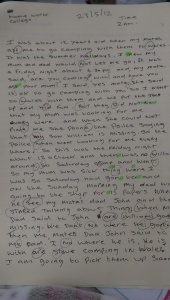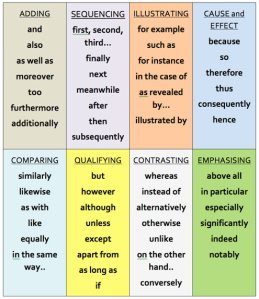I recently bought Phonetics for Phonics by Maxine Burton (2011) to help me increase my understanding of phonics. I’ve decided to use a think alouds method when researching phonics as I like to try things out for myself before giving it to learners; click here for some thoughts on think alouds.
What do I know about this topic?
I know that phonics is a way to help learners decode words through sound-letters. I know that there is some debate over which works; language experience or phonics. I know that it has gone in and out of teaching vogue, and recently, there seems to be a higher precedence on using them. I know that there is a programme called Jolly Phonics, Toe by Toe and Yes We Can Read. I’m aware of others in the company I work for using Yes We Can Read, and have spoken to them briefly about it. I have a volunteer I have trained to work with learners who need 121, however there are some challenges this brings on outreach, and in terms of being able to assess success, without doing it myself. I know about the International Phonetic Alphabet (IPA). I know that there are about 44 sounds, accent can affect phonics delivery, and that the problem people have are more with vowels than consonants. I have an awareness of where sounds are produced (e.g. labio-dental, fricative etc) and understand a big part of voiced and unvoiced sounds.
What do I think I will learn about this topic?
I think I’ll learn some of the answers to these questions I have:
Are there different types of phonics programme? Do some say Dolch words come first, or language which the learners will find useful? What’s the difference between the different type of phonics (synthetic/analytic) etc?
Do I understand what I just read?
Yes, and here are some points I felt interesting to make it more accessible for me in future. Burton (2011, p.8) notes that many adults have learnt the alphabet but haven’t been able to link the letters to the sounds they make. She notes that learners might be successful in reading some words, but not have the knowledge to apply their knowledge to new words:
‘Even learners who are able to ‘sound out’ the letters, in the sense of connecting certain letters with certain sounds may still struggle to blend these sounds into words. This is a very specific skill and to the beginner reader it is not immediately obvious’. From experience using the Yes We Can Read programme, I first found it necessary for learners to know the majority of the initial sounds (26 – based on the alphabet rather than number of sounds which actually exist), which I think helped learners to use their prior knowledge of English, especially if they know the letter names. Some, from my experience, have been rather surprised to find out that there are (about) 44 sounds, and by blending letters together, they create new sounds.
Once my learners felt comfortable with this, they hurdled quickly into blending 2 letter words, most without major problems. Being explicit about blending, and ensuring that I followed the same process for each word I think helps the learner know what to do and when – they have a difficult enough time concentrating on learning the sounds, nevermind when to repeat, not repeat etc so I think consistency is the key to moving ahead quickly.
Burton (2011, p.9) states, ‘if word recognition is a prerequisite for the ultimate comprehension, then it seems perverse to withhold or downgrade knowledge of phonic techniques as a useful first step in decoding, and this empowering learners to become independent readers’. She believes ‘strongly that phonics should be the first (but not the only) word identification strategy used’.
Chapter 2 discusses ‘why does phonetics matter for phonics?’ She notes that many teachers don’t have an understanding of phonics and that ‘beginner readers and writers above all need highly skilled teaching from teachers who are totally secure in their knowledge of language’. Unfortunately, this highlights one of my main issues with adult teacher training; you just don’t get to know what you need to know quickly enough, and is the main reason why I have felt so uncomfortable. I hated going into a classroom, not knowing what I was doing. There were many points which I thought, and sill think, I have done well, but I’m surprised that you’re trusted with that level of responsibility so soon, and is not something which I have observed happens in quite the same way if you train for a different type of teacher role. The irony is that adult literacy learners have quite possibly been failed before, and are set up to fail again. I still think I have a million things to learn, and I am by no means complacent. You just don’t learn what you need to quickly enough.
On page 14, she points out that ‘this system is for the use of teachers, not for learners’. Maybe this is the case in literacy instruction, however in ESOL we would use the IPA. I’m not 100% sure why yet, so this is something I’ll look at at another time.
Do I have a clear picture in my head about this information?
In parts no. I have read a few books by Maxine Burton now, and love how she writes simply. Sometimes when getting my head around something it takes me a while to process what is written, naturally, but sometimes authors make it a bit more complex than they need to. Burton is not one of those writers, however I had to re-read the following a few times before it sunk in. She discusses some of the problems/misleading information teachers have given learners about phonics (2011, p.12):
‘Trying to help a learner read the word <ship> by pointing ut the /h/ ‘sound’. The problem is is that /h/ is not the phoneme at work here, rather /ʃ/ is. It would be more helpful to discuss ‘sh’/ʃ/ and examples.
‘Breaking down the word <married> into ‘syllables’ – marr-i-ed to make it easier to read.’ For a start, ‘married’ has 2 syllables, but it might also be helpful to look at how we form past tenses, depending on what stage the learner is up to, or to look at ‘ied’ spellings//Id/ sounds.
‘Helping a learner spell the last letter of <floor> by asking what sound there was at the end of the word.’ The last sound of the word is /ɔ:/ (depending on your accent).
I also had to read this a few times before I could ‘get’ it: ‘in words such as ‘light’ and ‘sight’ the sound /t/ is represented by the grapheme <ght>…comparison with words such as ‘site’ and ‘sigh’, would suggest a different correspondence’. I’m not sure how I’d present this yet, but I’m sure I’ll know more soon!
Burton (2011, p.17-18) describes Phonetics as the actual sounds and how they are produced, and Phonology as how sounds are organised and the patterns made by the sounds. She explains that not all sounds are phonemes.
I will have to re-read chapters 5 and 6, as although I understood the meaning, it didn’t really sink in, and I have not yet noticed how the information can be used in future.
What were the most important points in this reading?
Probably the bits I will need to read again! Chapters 5, 6 and 7 need to be looked at again. I found them confusing to transfer into teaching.
What new information did I learn?
- The most interesting thing I learnt was that when we say ‘the apple’ we use /i:/ rather than the schwa. If we say ‘the banana’ we use the schwa. I would have expected that I would have known this teaching ESOL, and that’s probably why I find it so exciting!
- I understood a little bit about assimilation, and would like to understand more in future, however I found it interesting that ‘if you have a voiceless consonant it’s easier to follow it with another voiceless one’ (Burton, 2011, p.21) and vice versa. She continues this…means that consonant clusters – adjacent consonant phonemes – in English are either all voiced or all voiceless’.
- a schwa can usually only be used in unstressed syllables, and spelled with any letter, but usually ‘a’
- stress can change phonemes e.g. conduct (verb) v conduct (noun)
- learners are used to using connected speech – remember this.
How does it fit in with what I already know?
It doesn’t in many respects. I’ve found more questions and action points than I have answers. My questions still stand: Are there different types of phonics programme? Do some say Dolch words come first, or language which the learners will find useful? What’s the difference between the different type of phonics (synthetic/analytic) etc?
Some further questions:
- Where do different programmes start? All 26, then digraphs, chosen to high frequency words, or learner’s idiolect?
- Why do you use phonics in 1st language, but the IPA in ESOL? The British Council’s Nexus site shows how to use phonics/language experience with beginner literacy learners. Is there more debate than I realised?
- How would I teach <ght>?
- What are the ambiguities mentioned on p.15?
- assimilation
- articulation
- connected speech – features in Liverpool/how much do learners need to explicitly understand?
- how do I present phonics in regards to accent?
She suggests many further reading lists throughout the book, and I have added these to my further reading post.
References
Burton, M. (2011) Phonetics for Phonics. Underpinning Knowledge for Adult Literacy Practitioners. Leicester: NIACE


